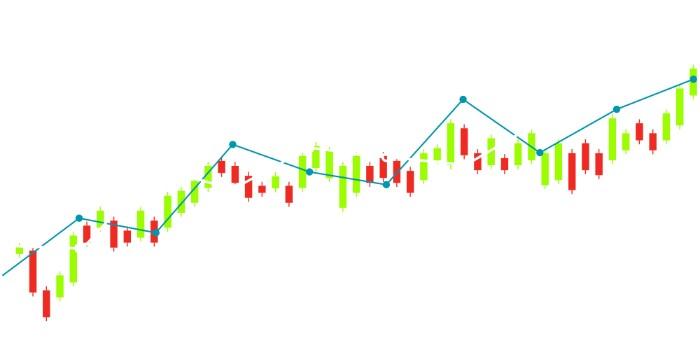Leveraged and Inverse ETFs
Nov 12, 2023 By Triston Martin
Have you ever wondered what it would be like if you could trade on an asset’s price movements multiplied two, three, or even four times? If so, you should explore leveraging and inverse exchange-traded funds (ETFs).
Leveraged and inverse ETFs are a great tool for investors looking to potentially increase their returns in both the short-term and with long-term investment strategies.
This blog post will provide an overview of leveraged and inverse ETFs, including their use cases, products available in Canada today, and some potential risks associated with these instruments. Discover why trading leveraged or inverse ETFs may be right for your portfolio.
Overview of Leveraged and Inverse ETFs
Leveraged and inverse exchange-traded funds (ETFs) are a type of financial instrument that allows investors to gain exposure to an underlying asset, index, or sector while leveraging the investment. This can provide powerful returns in both bear and bull markets, but it also comes with added risk.
Leveraged and inverse ETFs attempt to deliver multiples of the daily return of an underlying benchmark. They are typically used by more experienced traders looking for short-term opportunities and can be used as a hedging tool for longer-term investments.
Some leveraged and inverse ETFs offer three times (300%) the daily return of their benchmark, while others offer up to four times (400%). Investors should consider the added risk of leverage when investing in leveraged and inverse ETFs. Depending on market conditions, they are also subject to compounding, which can amplify gains or losses.
For example, a 3x leveraged ETF attempting to track the S&P 500 will aim to return three times the daily performance of the underlying benchmark. If the S&P 500 rises by 1% on a given day, the 3x leveraged ETF would aim to return +3%. Conversely, if the S&P 500 falls by 1%, the 3x leveraged ETF would aim to return -3%.
Types of Inverse ETFs

In addition, to leverage ETFs, investors can also use inverse exchange-traded funds (ETFs). Inverse ETFs seek to profit from declines in an underlying asset, sector, or index prices. They are designed as a short position on an asset and can provide an easy way for investors to hedge against losses in long positions.
Inverse ETFs come in two varieties, daily and non-daily. Daily inverse ETFs are the most popular and commonly used by traders. They reset their exposure to the underlying benchmark or index daily, which means they may not be suitable for investors looking to hold positions over longer periods.
Non-daily inverse ETFs reset their exposure on a monthly or quarterly basis. This can benefit investors looking to hold positions over the long term, as the net effect of compounding will be reduced.
How to Choose the Right ETF for You
When selecting a leveraged or inverse ETF, it’s important to consider the underlying asset you want to track and the desired leverage. Investors should also pay attention to the correlation and liquidity of the ETFs they are considering. Correlation helps determine how closely an ETF tracks its benchmark, while liquidity helps measure how easily an ETF can be traded without significantly impacting the share price.
It is also important to pay attention to the fees associated with leveraged and inverse ETFs, as they tend to be higher than regular ETFs. Investors should be aware of any tracking error that may arise due to compounding effects over time. Tracking error is the difference between an ETF’s performance and the performance of its underlying benchmark.
Finally, investors should understand the risks associated with leveraged and inverse ETFs before investing. These instruments can be extremely powerful tools for investors looking to achieve short-term gains in a volatile market, but they also come with heightened risks due to their use of leverage. Investors should also know the potential for compounding to amplify returns and losses over time.
Leveraged and inverse ETFs can provide a versatile tool for investors looking to take advantage of short-term opportunities in the market. However, it is important that investors fully understand the associated risks before investing in these instruments.
Pros and Cons of Leveraged ETFs
Pros:
- Leveraged ETFs are an easy-to-use tool for investors looking to take advantage of market opportunities in the short term.
- They offer access to three or four times the returns of benchmark indices, which can help achieve higher returns over a shorter period.
- Using leverage provides more opportunities for profit while also increasing the potential for losses.
Cons:
- Using leverage can lead to compounding, which can amplify returns or losses over time.
- Leveraged ETFs typically come with higher fees than regular ETFs, which can reduce returns.
- Tracking error is a potential issue when investing in leveraged ETFs, as it can lead to returns that do not match the underlying asset or benchmark.
- Leveraged ETFs may not be suitable for longer-term investments due to the increased risk associated with their use of leverage.
How do inverse and leveraged ETFs work

Inverse ETFs work by providing investors with returns that are opposite of the benchmark they track - meaning when a benchmark increases in value, an inverse ETF will decrease in value. Leveraged ETFs, on the other hand, provide investors with multiples of the return offered by the underlying asset or benchmark they track. For example, a leveraged ETF that tracks the S&P 500 could provide investors with double or triple the underlying index's return over a certain period.
Inverse and leveraged ETFs use derivatives, such as futures contracts and swaps, to generate returns for investors. As these instruments are based on leverage, they can generate large gains - but also potentially large losses - in a short period. As such, investors should be aware of the risks associated with investing in leveraged and inverse ETFs, including the risk of leverage and compounding effects that can magnify gains or losses over time.
What are leveraged and inverse ETFs
Leveraged and inverse ETFs are exchange-traded funds that use derivatives, such as futures contracts or swaps, to provide investors with returns that are multiples of the underlying asset or benchmark they track.
Leveraged ETFs offer increased exposure to an index or asset class by providing double or triple the return of the underlying benchmark over a certain period. Inverse ETFs, on the other hand, provide investors with returns that are opposite of the underlying asset or index they track.
For example, an inverse ETF will decrease when a benchmark increases in value.
Both leveraged and inverse ETFs come with risks due to their use of leverage. As such, investors need to understand the fund's structure and how it will track against its benchmark and be aware of potential compounding effects that can magnify returns or losses over time.
FAQs
What is leveraged 3X inverse ETF?
A leveraged 3X inverse ETF is an exchange-traded fund that gives investors three times the opposite return of the underlying asset or benchmark they track. For example, if the underlying asset increases in value by 5%, the leveraged 3X inverse ETF will decrease by 15%.
What are the risks associated with leveraged and inverse ETFs?
Using leverage can lead to compounding, which can amplify returns or losses over time. Leveraged ETFs typically come with higher fees than regular ETFs, which can reduce returns. Leveraged ETFs may not be suitable for longer-term investments due to the increased risk associated with their use of leverage.
Are leveraged and inverse ETFs suitable for all investors?
No, not all investors should use leveraged or inverse ETFs. It is crucial to understand the fund's structure, how it will perform against its benchmark, and any potential compounding effects that can amplify gains or losses over time.
Conclusion
Leveraged and inverse ETFs can be powerful tools for investors looking to amplify their market exposure or make bets against certain sectors, but they come with risks that must be understood. These products require daily rebalancing and can compound over time, potentially leading to greater losses. It's crucial for investors to carefully consider their investment goals and strategies before jumping in.








